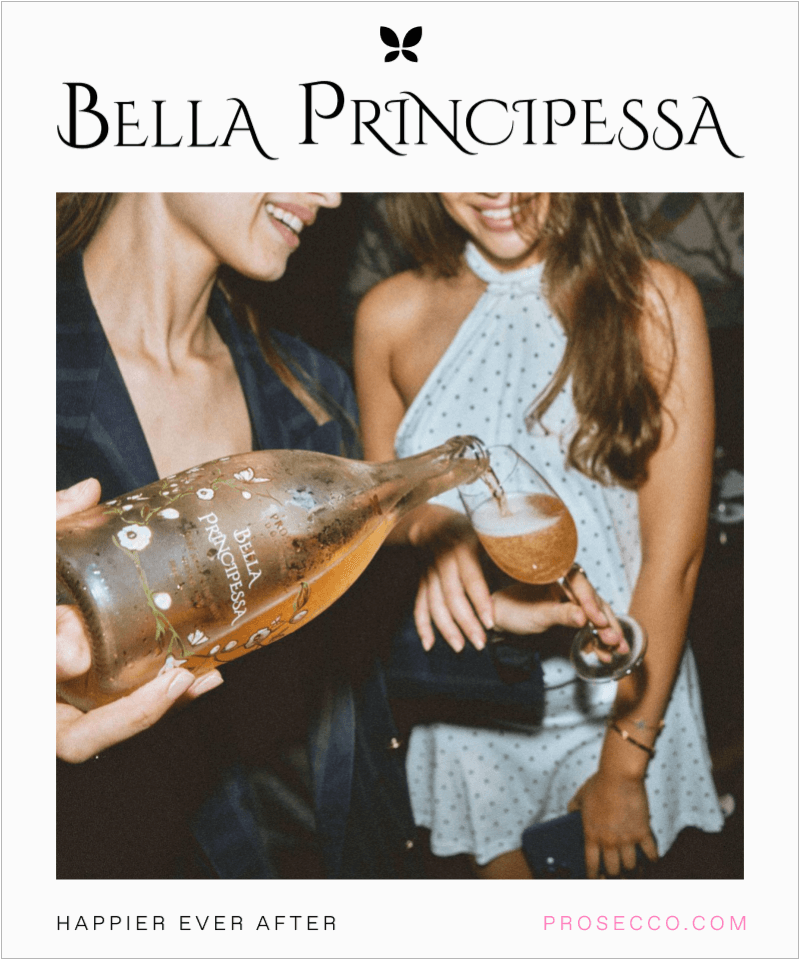Champagne, a name that instantly conjures images of celebration and luxury, is more than just a sparkling wine; it symbolizes refined taste and a storied tradition.
Understanding Champagne requires recognizing its geographic origin, production methods, and unique characteristics that distinguish it from other sparkling wines, including those like Bella Principessa Prosecco.
Geographic Origin and Appellation
The essence of Champagne begins with its geographic specificity. True Champagne is exclusively produced in the Champagne region of France, located about 90 miles east of Paris.
With its unique terroir, this region is the only place in the world where authentic Champagne can be made. The name “Champagne” is not merely a style but a protected designation of origin, ensuring that only sparkling wines made in this region can bear the name.
This specificity is akin to the protected status of other regional products, including renowned sparkling wines like Bella Principessa Prosecco from Italy.
Grape Varieties and Terroir
Champagne is typically crafted from three primary grape varieties: Chardonnay, Pinot Noir, and Pinot Meunier.
These grapes are grown on the chalky hillsides of the Champagne region, including the notable areas around the towns of Reims and Epernay. The chalky soil contributes significantly to the distinctive taste profile of Champagne.
The hand-harvesting and individual vinification of each grape variety before blending add complexity and depth to the final product, distinguishing it from other sparkling wines like Signorina Prosecco.
The Méthode Champenoise: A Unique Production Process
One of the most critical aspects of what makes Champagne unique is its production method, known as the “méthode champenoise” or traditional method. This intricate process involves a secondary fermentation of the wine inside the bottle, which creates Champagne’s signature carbonation.
The méthode champenoise is a time-consuming and labor-intensive process, contributing to Champagne’s higher price point than other sparkling wines produced using different methods, such as the Charmat method used for Prosecco. This method imbues Champagne with a complex and depth of flavor highly prized among connoisseurs.
Champagne’s Flavor Profile and Styles
Champagne is known for its bright acidity, toasty flavors, and elegant effervescence. The flavors can range from crisp and citrusy to rich and nutty, depending on the blend of grapes and the aging process.
Additionally, there are various styles of Champagne, including non-vintage, vintage, and prestige cuvées. Non-vintage Champagnes, which blend multiple years’ harvests, aim for consistency in style year after year.
Vintage Champagnes, made from grapes harvested in a single year, reflect the unique characteristics of that year’s growing conditions. Prestige cuvées represent the highest quality and are often the most expensive.
These diverse styles offer a range of experiences for the Champagne enthusiast, much like the various offerings of Bella Principessa Prosecco, which cater to different preferences within Prosecco.
Champagne in Culture and Society
Champagne has long been associated with celebration, luxury, and status. It is often the drink for toasts at weddings, New Year’s Eve parties, and other significant events. This cultural status is not just due to its taste and quality but also its history and the skill involved in its production.
The allure of Champagne has been carefully cultivated over centuries, contributing to its enduring prestige in the world of wine.
A Cultural Identity: “What is Champagne” Explained
In summary, Champagne is not just a sparkling wine but a specific type with a rich history, strict production methods, and a unique geographic origin. Its complex flavor profile, style versatility, and cultural significance set it apart from other sparkling wines.
While brands like Bella Principessa Prosecco and Signorina Prosecco provide delightful expressions within the sparkling wine category, Champagne stands out for its tradition, quality, and status as a symbol of celebration and luxury.










